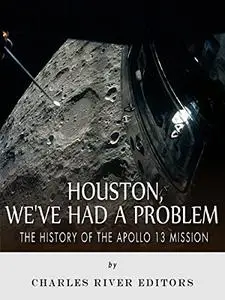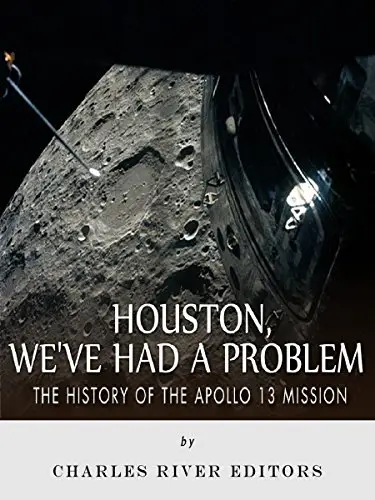Houston, We've Had a Problem: The History of the Apollo 13 Mission by Charles River Editors
English | May 27, 2015 | ISBN: 151239243X | 61 pages | EPUB | 1.32 Mb
English | May 27, 2015 | ISBN: 151239243X | 61 pages | EPUB | 1.32 Mb
*Includes pictures *Includes accounts of the mission written by the astronauts and members of Mission Control *Includes online resources and a bibliography for further reading *Includes a table of contents “The only experiment we completed on Apollo 13 was not on the original mission list.” – James Lovell, Jr. In the summer of 1969, Apollo 11 successfully landed men on the Moon for the first time in history, and Apollo 12 successfully landed astronauts on the Moon just a few months after Apollo 11’s successful mission. Apollo 12 was actually more successful than Apollo 11 from the standpoint of fulfilling the mission objectives, but it was naturally overshadowed since it did not come first. Another reason Apollo 12 is mostly forgotten today can be credited to the dramatic and fateful Apollo 13 mission, which took twists and turns nobody could have predicted when it launched on April 11, 1970. Apollo 13’s mission was to land on the Moon near the Fra Mauro highlands, which were hills that had somehow formed in the middle of a huge crater tens of miles wide. The mission was supposed to test for seismic activity and take samples to analyze the crater and try to find an explanation for the formation of the hills. Of course, as is widely known today, Apollo 13 never made the landing. The ever-dependable Saturn V properly thrust Apollo 13 out of the Earth’s orbit and toward the Moon, but two days into the voyage, the crew heard a loud bang. At first, the crew was not sure what had happened, leading Commander James Lovell to famously transmit to Mission Control, “Houston, we’ve had a problem.” As it turned out, one of the main oxygen tanks had ruptured in the Service Module, causing a catastrophic failure. The Command/Service Module’s fuel cells all shut down, leaving the command/Service Module to run on backup batteries. In other words, Apollo 13 was adrift between the Earth and the Moon with limited battery power. With severely limited supplies and power, Apollo 13 shut down the Command/Service Module altogether, and the entire crew had to rely on camping out in the Lunar Module, which was only equipped to support two astronauts. The Moon landing was obviously out of the question, but Apollo 13 still had to orbit around the Moon to head back to Earth, a trip that would take four more days. Power and water were the two most critical shortages, forcing the crew to maintain the Lunar Module at low energy. The crew also had to worry about carbon dioxide building up and poisoning them, because the Lunar Module’s system to remove carbon dioxide was designed to support two people for a few days, not three people for four days. Once Apollo 13 rounded the Moon and headed back to Earth, the crew and Mission Control managed to restart the Command/Service Module, rerouting power from the Lunar Module to the Command/Service Module. The crew also had to manually realign the spacecraft for reentry, as Lovell had done for Apollo 8. Before reentry, the Service Module was jettisoned from the spacecraft, and pictures of it were taken to see what went so terribly wrong. The crew then jettisoned the Lunar Module that had saved their lives, leaving it to burn up in the Earth’s atmosphere. On the afternoon of April 17, Apollo 13’s Command Module made a nerve-wracking but successful reentry into Earth’s atmosphere, allowing Lovell to consider the mission a “successful failure.” Gene Kranz, the Lead Flight Controller at Mission Control, considered Apollo 13’s safe return to be "NASA's finest hour." Houston, We've Had a Problem: The History of the Apollo 13 Mission analyzes the conception of the Apollo program and the events that brought about one of the most famous space missions in history. Along with pictures of important people, places, and events, you will learn about Apollo 13 like never before, in no time at all.
Feel Free to contact me for book requests, informations or feedbacks.
Without You And Your Support We Can’t Continue
Thanks For Buying Premium From My Links For Support
Without You And Your Support We Can’t Continue
Thanks For Buying Premium From My Links For Support



